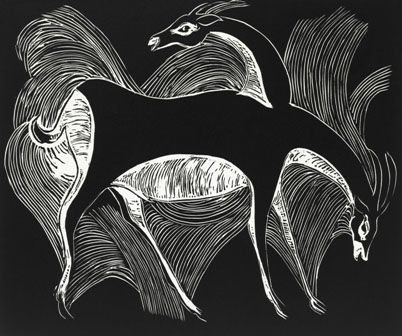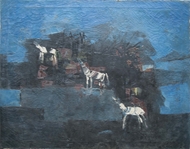![]() Contemporary Indian Art & Books
Contemporary Indian Art & Books
![]() Contemporary Indian Art & Books
GULAM MOHAMMED SHEIKH (B. 1937)
Contemporary Indian Art & Books
GULAM MOHAMMED SHEIKH (B. 1937)
RELATED LOTS
CONTACT US
Catalogue & Viewing
Lot Closed
Accounts & Shipping
Lot Closed
-
Literature
 Literature
Literature

Gulam Mohammed Sheikh was born in 1937 and has done his initial study from the Baroda School of Art and subsequently studied at Royal College of Art, London. He has taught Art History and painting at Baroda for nearly 30 years. He has traveled widely in Europe particularly to Italy where he studied the early Renaissance artists. His interest in Indian Traditional art has developed a unique vocabulary in his own paintings Apart from being a painter, to his credit go many publications pertaining to Art History and criticism. He has also written poetry and prose. This intellectual understanding shows very effectively in his works.
He has initiated the theory of the Narrative-Figurative tendency in contemporary art. In his early works he has been concerned with the
subconscious occupation of human existence. Later between 1960s to 1970s his works showed a coalescence of surreal and mundane worlds. The forms became very organic with an undercurrent of erotic .He has been very concerned about the indigenous art practices and has tried to create a language that supports such forms of art. He places the historical devices with a mysterious ease with the present, with each complementing the other .He deftly synergizes the energy of Mughal painting with vibrancy of his colour palette. His practical knowledge of Indian Miniatures Painting goes deeper than the superficial understanding. The world of the miniature with its flora, fauna, architecture and multiple perspectives finds its way on the surface of his works.It is a monochromatic Print of a Double headed Deer having the lyrical delicacy and elegance rendered in the Persian Miniature Paintings style. The tail, half the neck and the under belly of the animal is white contrasting with black and Sheikh has very effectively used the white lines on the negative surface to create a rhythmic continuity. The two heads are placed in a way that each head when looked at individually completes the animal figure without disturbing the other. Hence there are two deer cleverly metamorphosed into one.

